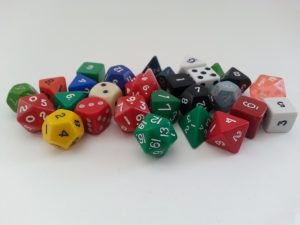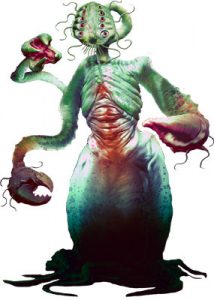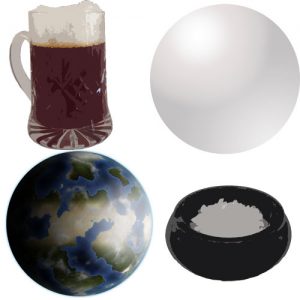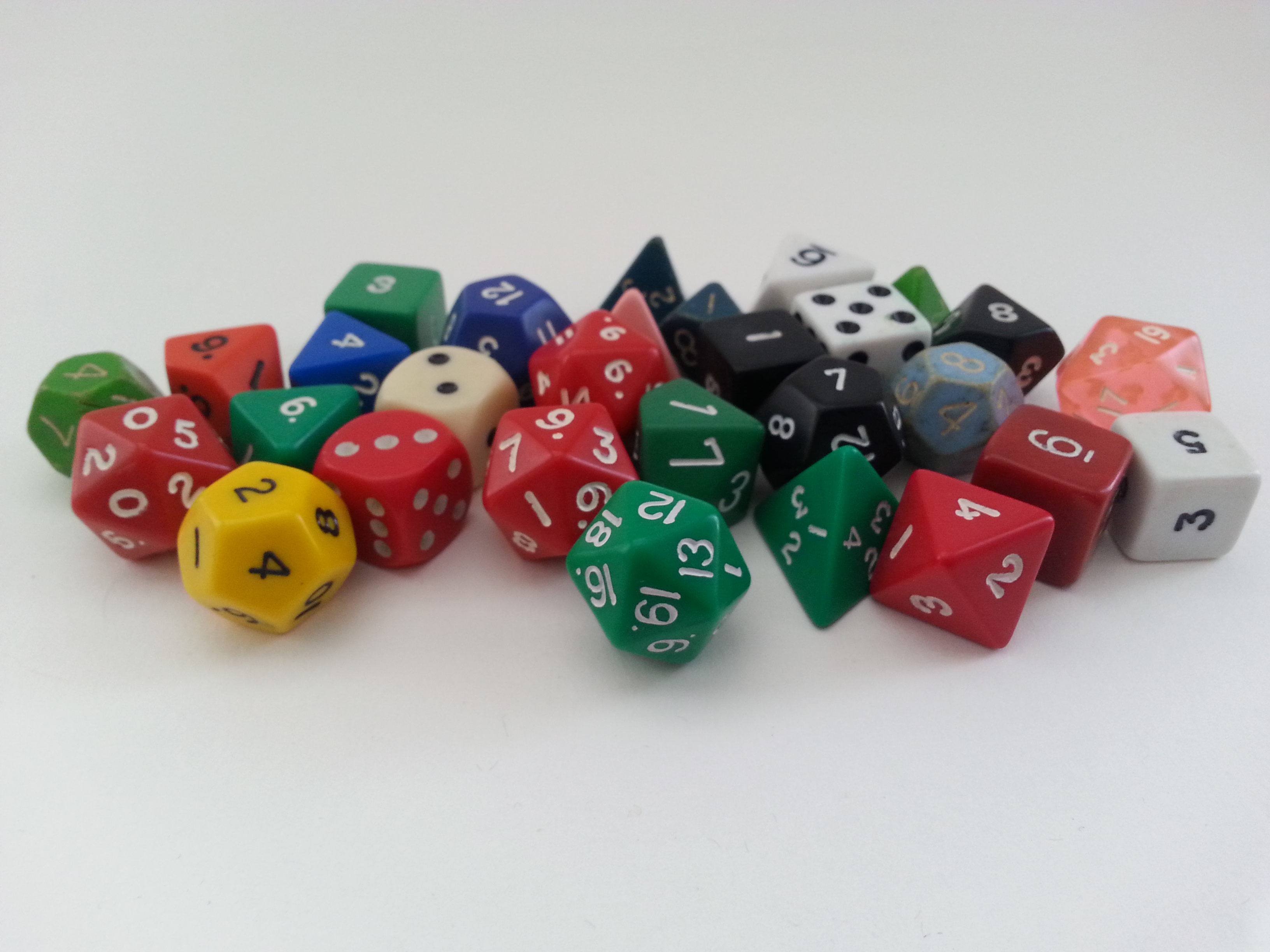So, Brian asked me to write a post on some of my own experiences with self-publishing RPG supplements, which I’ve been doing for about three years, although my first and second supplements were five months apart! All but one week since the second supplement was published has had a new one released every week (although some were art packs, not written), and recently two have been published weekly. This post wound up being rather longer than I expected, so it’s been split into three parts.
Part 1: How I Started Self-Publishing, How to Know What Will Succeed and Art & Layout
Part 2: Setting the Price, Where to Actually Sell and Sales & Marketing
Part 3: Do Reviews Help or Hinder? and What Return to Expect?

How I Started Self-Publishing
I discovered the OneBookShelf sites (the OBS network consists of many different sites; perhaps the most important for RPG supplement writers are DriveThruRPG and RPGNow, and perhaps Dungeon Masters Guild and Storytellers Vault) some years back whilst looking for material for a phpBB forum based game called Advanced Dungeons & Rabbits. Some years later, as I mentioned elsewhere, I looked at things being published and thought “I could do that.”
At the date of writing this, I have published 136 of my own (written) supplements, totalling 403,857 words. One of these has been published in a Pathfinder edition as well, adding another 4,294 words (I plan to convert some others to Pathfinder and probably other systems too). I have also published 3 outsourced supplements, totalling 13,574 words, and adapted two of those to system neutral versions from Pathfinder, another 10,520 words. With Brian and Peter here I have also published 4 supplements, totalling 2,639 words, as part of the 50 in 50 adventures that are being released at the rate of one per week. I also have a few bundles and art-related items on sale, the latter either images created for my own projects or experiments done whilst creating images to use.
How to Know What Will Succeed
 It’s difficult knowing what will be successful in creative matters. Consider that big companies get this wrong all the time. Think of Hollywood box office flops with budgets of hundreds of millions of dollars or, on the other hand, books by unknown authors that the publisher only prints a couple of thousand copies of to start with, because that’s how big they think the market is (think J.K. Rowling and the Harry Potter franchise).
It’s difficult knowing what will be successful in creative matters. Consider that big companies get this wrong all the time. Think of Hollywood box office flops with budgets of hundreds of millions of dollars or, on the other hand, books by unknown authors that the publisher only prints a couple of thousand copies of to start with, because that’s how big they think the market is (think J.K. Rowling and the Harry Potter franchise).
A starting point would be to do what you like, or want, or need for your own game, as odds are there will be at least a few people with a similar opinion. Looking through my portfolio, you will notice quite a lot of supplements connected to books, books being my own particular area of interest. If something does seem to be working, try to produce more of the same, or similar.
Writing for popular systems such as Pathfinder and D&D 5E specifically also increases the potential market but it often also increases the potential competition, and there is some third party competition out there that produces material of a higher quality than the big companies. There are a lot of systems that can be written for under the Open Game License, and there’s nothing to stop you creating your own (as long as it is your own). Pathfinder and 5E might have the biggest potential markets but, if you don’t enjoy writing for those, don’t do it. Not many people get rich in this market which makes enjoyment very important.
Art & Layout

Art and layout can be a big problem for the small publisher, due to the expense of software and material.
Regarding layout, there are options for those with a limited budget. Scribus is free desktop publishing software and Microsoft Word is another option; however, I recently purchased the entire Adobe CS6 package – including InDesign – for under £20 from a seller on eBay. According to them – and they’d sold a lot of this and other software – it’s legal in the EU to resell second hand software from scrapped computers. Given that you couldn’t link it to your Adobe account, I’d say technically legal but Adobe really doesn’t like the fact that it is (the seller doesn’t currently have it for sale). Another alternative is that you can also always partner up with someone else who has skills or software you lack.
Nicer looking supplements can sell better, and do tend to look more professional, but remember that the supplements being well written, with few errors in the text, is the most important starting point. Good looking rubbish is still rubbish. Such can still be damaged by poor layout or appearance of course – the most likely cause of this is from poor font choices; remember, people need to be able to read the finished product. Odd fonts can work for headings but don’t have an entire supplement in some weird font. I have seen supplements which were a pain to read because the publisher had used a difficult font throughout. If you have good material, you don’t want to hide it behind a poor font, but picking good fonts is a skill in itself and professionally made fonts are not cheap to buy either. Stick to the standard included fonts at first. Generally, I use 12 point Verdana for the text (font size is important as well) having read a suggestion to use that in the past. Boring fonts like Times New Roman are still good choices for readability.
Artwork for supplements, as Peter and I have discussed in the past, can be a problem. Some things, especially such as bestiaries, really need images for all the monsters and that, even using stock, can quickly become expensive. The lowest typical stock prices for such are a couple of dollars or so each. A bestiary of 50 monsters could be the best part of $100 just for the pictures and easily more.
My most expensive (in terms of its selling price) supplement has eight pieces of stock art in it, plus the page backgrounds, the latter being much easier to reuse (I have all of Lord Zsezse Works’ templates). These eight pieces cost over $20, and that’s only because they were bought at reduced prices – they would cost just shy of $80 to buy at full price at the moment, and these are stock images, not custom. Custom images can cost a lot more. $40-$50 each is not unreasonable for a single monster or similar.

There are ways of creating cheaper artwork, by doing it yourself. I’ve used photos, either my own or others that are legal to use, and tweaked them using filters so that they look more like illustrations. I’ve also created some images from scratch, using such as Photoshop, Blender (free) and GIMP (free). These ways may not always look as good as those done by professionals (unless you have skills that way yourself) but they do save money – although generally not time.


This is great! One of the things I find frustrating about art is finding the right piece. RPGNow doesn’t have much and DeviantArt’s search functionality feels clunky. Im typically looking for line art illustrations.
Thanks! Yes, finding the right art is a problem. I wondered whilst writing this about suggesting to OneBookShelf that they set up a dedicated stock art site.
A couple of nice line art publishers on OBS are The Forge Studios and Outland Arts. It’s often still a problem finding the right stock piece to use though, without paying for custom artwork.
Thanks very much for the article EG! I found it very helpful as I contemplate getting into self publishing.
Thanks! Looking at the calendar, I’ll probably publish Part 2 on Saturday and Part 3 on Tuesday. Self publishing is fun, even if it isn’t necessarily the most profitable use of my time.
Knowing what will sell is a bit of a black are but I would say the cover art and the title are two of the most important factors. In a list of possibly hundreds or thousands of competing titles yours has to stand out.
I like a hint of humour or playing on a well known phrase as titles. Looking at the 50 in 50 titles to the left, Far from the Baying Crowd is obviously a play on Far From The Madding Crowd but also nods to the villian being a werewolf. In a few weeks you will be treated to Snakes on a Wagon Train.
I feel that your title can get people to read your product description who may otherwise have passed it over. Once they are looking at your product they may buy it, if they never look then they definitely won’t buy.
Yes, it’s truly hard knowing for certain what will sell, and you shouldn’t rule stuff out just because you think it won’t. You could be wrong.
Having customers who already know and like what you produce can help with sales too. One oddball approach to cover art is that of Raging Swan Press – their covers are all plain, black for Pathfinder, yellow for system neutral and red for 5E, with simply the title on the front. Creighton Broadhurst explained the approach in the (free) Pathways #8.
Egdctld, I second Hurin: thanks very much for this. I’m also looking at self-publishing, so this is coming at exactly the right time. Looking forward to the coming installments.
Thanks! I do find self publishing RPG material to be enjoyable.